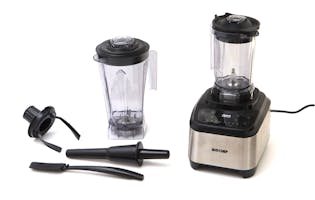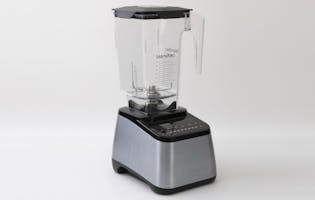
Kitchen knives
Do you need a full set of kitchen knives?
In our experience, you don’t need to buy a full set of knives.
Every kitchen should, however, have a chef’s knife – a multi-purpose tool that can be used for jointing and cutting meat, dicing vegetables, and chopping herbs and nuts. It can’t do everything, though, so you’ll need a paring knife and a serrated knife, too. Those three knives will suit most tasks in the home kitchen, but you’ll need more specialised knives for tasks such as filleting fish.
Types of knives
A chef’s knife is a multi-purpose tool, but it can’t do everything. Here are some other common knives:
- Paring knife — this little knife is handy for peeling and trimming fruit and other vegetables.
- Filleting knife — good for removing skin from fish, butterflying meats, and precise work with raw meat, fish, or chicken.
- Carving knife — this knife usually has a longer blade but isn’t as deep as a chef’s knife. The longer blade is good for slicing wider joints, such as cooked ham.
- Utility or all-purpose knife — similar to the paring knife but with a longer blade; it’s good for small, everyday cutting jobs.
- Bread knife — the serrated edge of this knife helps cut through a loaf of bread without squashing it.
- Shears — kitchen shears are good for jointing chickens, as well as cutting herbs and snipping bacon into pieces. They’re handy for many kitchen jobs, including opening packaging, and may even pull apart for easy cleaning.

Tips to help your knives last
- Chopping boards should be made of soft materials such as wood, plastic or nylon. Using sheets of glass, stainless-steel bench tops and crockery as cutting boards will dull your blades and damage the edges.
- Some acids can etch metal, so don’t leave food to dry on your knives.
- Dishwashers are bad for sharp knives. Even if the handles are dishwasher safe, the caustic cleaners and all that clanking around will damage the edges. Rather wash your knives by hand.
- Store your knives on a magnetic rack, in a dedicated knife drawer, or in a knife block (with the edges facing up).
- Avoid the regular use of electric or “pull-through” knife sharpeners. These remove metal each time you use them and can progressively damage the blades.
- A bolster, sometimes called a finger guard, is the thick piece of metal at the heel of the blade that your index finger sits against. Knives with bolsters are generally easier to use and sharpen correctly.
Sharpening and steeling
To help keep your knife slicing as it did when new, you should steel it regularly. Steeling straightens and re-aligns the edge of the blade; it doesn’t sharpen the blade or remove any metal. The best steels are metal or ceramic, with smooth surfaces. A steel with a very rough, grooved surface will act like a file and damage your knife. Rough metal or diamond steels should be avoided.
Once steeling stops working, it’s time for your knives to get a proper sharpen. Many good cookware shops offer this service. Unless the sharpener’s very experienced, they shouldn’t use a motorised sharpener (grinding belt or wheel). It’s too easy to ruin a knife on them.
We've tested 22 benchtop blenders.
Find the right one for you.


.jpg&w=315&q=75)
Member comments
Get access to comment